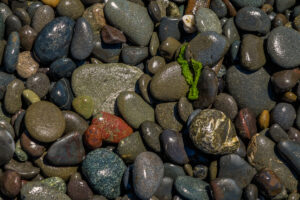
Mountain vistas among the subalpine forest, temperate rainforest and the rugged Pacific coastline are geographic delights that await you at Olympic National Park. Olympic National Park located in the State of Washington, on the Olympic Peninsula with over 900,000 acres. Established by President Theodore Roosevelt as Mount Olympus National Monument in 1909 was later redesignated as a national park by Congress and President Franklin Roosevelt in 1938. Olympic National Park is also designated as a UNESCO International Biosphere Reserve and World Heritage Site. Olympic National Park is a diverse ecosystem that provides opportunities to experience different environments within its borders. At the Park’s center is the Olympic Mountains which is dominated by the peak of Mount Olympus rising to 7,965 feet and containing several glaciers including the largest of which being Hoh Glacier. Fantastic mountain views can be seen from Hurricane Ridge and its visitor center located near the summit of the 5,242-foot peak.

The ridge is open to hiking, skiing, and snowboarding and is a year-round destination. In summer, the mountainous views and subalpine meadows that surround the treeline can be breathtaking. Hurricane Ridge can be accessed by a very curvy road and is about 18 miles from Port Angeles. I enjoyed hiking the Cirque Rim and High Ridge trails that make about a 1-mile loop from the Hurricane Ridge Visitor Center parking lot. It was misty at the Hurricane Ridge summit but that added to the atmosphere of the exposed ridge and tree-lined alpine meadows. The abundant small Blacktail Deer do not seem to mind people along the trails and just carry on foraging with little distraction. By contrast, below the Olympic Mountains on the western side of the park are temperate rainforests, including the Hoh Rainforest and Quinault Rainforest. These rainforests receive about 150 inches of rain each year, making them perhaps the wettest area in the continental United States.

Of course, it rained on the day of my visit to the Hoh Rainforest which I should have been more prepared for but it did add to the interest of my short hike around the Hoh Rain Forest Visitor Center. I recommend having rain gear handy as a visit into the rainforests are likely to include some amount of rain but do not let the rain detract from your visit as it is the element that is so vital to maintaining that lush and unique environment. One area that I was surprised to stumble upon in Olympic National Park was the Sol Duc Hot Springs Resort a resort situated in a valley carved by the Sol Duc River. The resort is best known for its soaking pools, hot tubs, and a swimming pool that are heated with the nearby hot springs. The resort has a main lodge from which you can access the pools and also has accommodations and cabins for overnight guests.

You can even dine at the Springs Restaurant in the resort. I wish I had time to soak in the warm mineral spring-fed pools but it will be a gem that I can return to on my next visit to Olympic National Park. As far as accommodations in the park, there are three other places you can stay other than Sol Duc Hot Springs Resort which include Lake Quinault Lodge, Lake Crescent Lodge, and the Log Cabin Resort. However, I stayed in Port Angeles as I needed a dependable cell signal and the reception in the park was spotty. Another area of Olympic National Park that is a must-see is the 60 miles of rugged the Pacific coastline. I visited Ruby Beach the northernmost of the southern beaches in the coastal section of Olympic National Park. Most notable at Ruby Beach was the tremendous amount of driftwood and their size; some as big as small buses. Also, the beach has a number of sea stacks that are interesting to see that are a bit of a long walk on the beach from the parking area but worth the trek. Olympic National Park is vast and unique with a remote and untouched feel that has you imagining that you are at the edge of the continent. It is a landscape that is fantastical in many ways and one that I will enjoy returning to.
![]() Olympic National Park
Olympic National Park![]() 3002 Mount Angeles Road
3002 Mount Angeles Road![]() Port Angeles, Washington 98362
Port Angeles, Washington 98362![]() N 48º 05′ 57.6″ W 123º 25′ 32.2″
N 48º 05′ 57.6″ W 123º 25′ 32.2″


